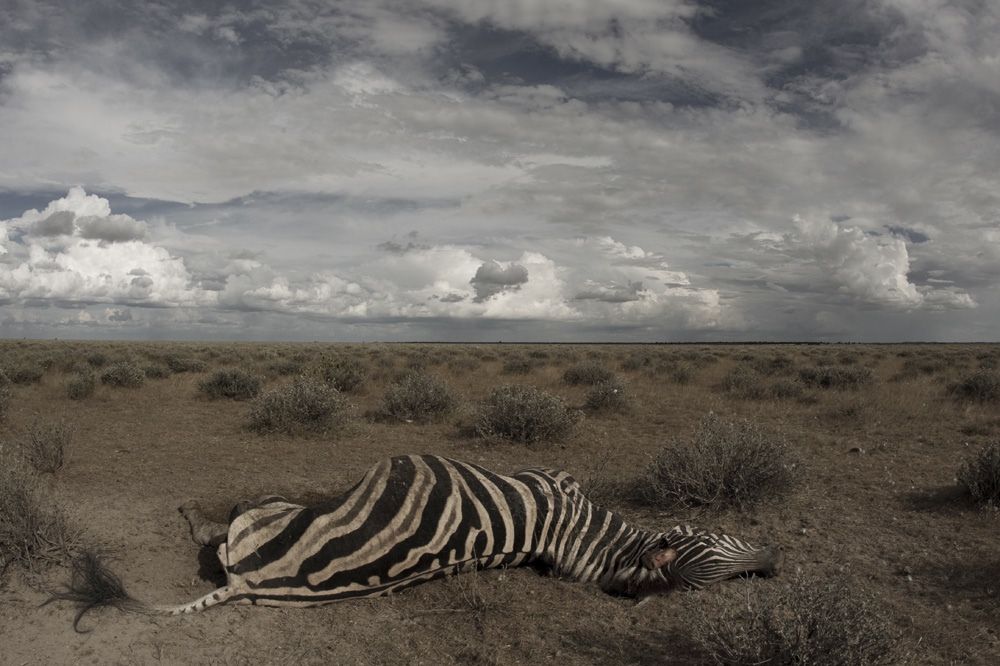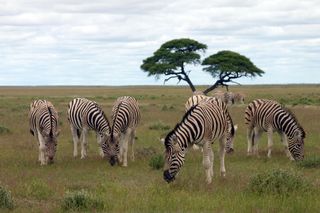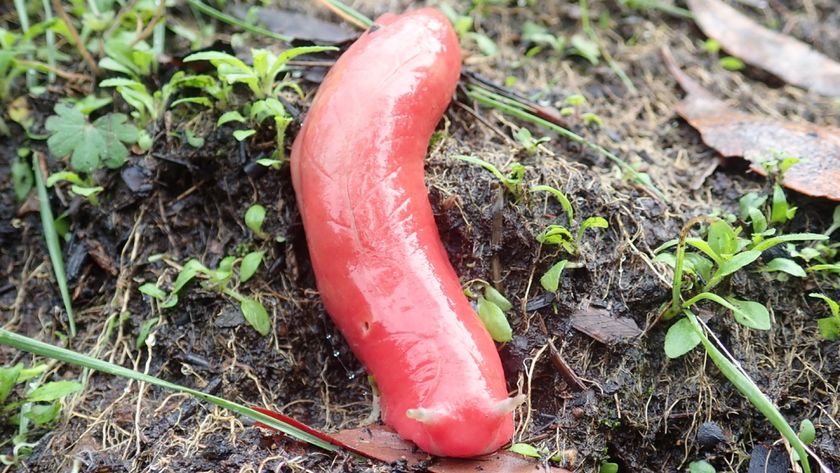In Africa, Anthrax Lures Animals to Their Death

Areas contaminated with anthrax germs lure grazing animals like zebras and wildebeest, and these animals could spread the bacteria, leading to new rounds of infections, researchers say.
This research could help scientists figure out the factors that underlie the timing and intensity of anthrax outbreaks in order to better predict them.
The anthrax bacterium, Bacillus anthracis, can cause symptoms ranging from itchy sores on the skin to breathing problems and fever, and can be fatal. About 95 percent of known anthrax infections in people are passed to humans through skin contact with livestock. Grazing animals, on the other hand, are thought to get anthrax by ingesting the microbe.
Scientists investigated zebra carcasses over a 115-square-mile (300 square kilometers) area at Etosha National Park in Namibia from 2010 to 2013. The anthrax bacterium is widespread in Namibia and is considered part of the park's natural ecosystem. Most anthrax cases seen in Etosha are in zebras; the disease can kill grazing herbivores within days after the animal is exposed to a lethal dose. [See Images of the Namibia Zebras and the Carcass Sites]

"I revisited a carcass site in 2007 from a zebra that I had found dead of anthrax one year previously, and saw a patch of lush, green grass growing up through the skeleton in an area that was otherwise a sea of short, dry grasses," said lead study author Wendy Turner, an ecologist at the University of Oslo in Norway. "This got me questioning the role of carcass sites for anthrax transmission. Would these areas be attractive to herbivores searching for high-quality food? Or would the remains of the carcass repel herbivores? And for how long might this attraction or avoidance last?"
Watching the grazers
For this study, the researchers analyzed 35 sites that tested positive for anthrax and eight sites that did not. The researchers also used motion-triggered cameras at 13 anthrax-affected carcass sites and 13 sites without carcasses, to monitor the grazing activity of herbivores, such as elephants, wildebeest and zebras. The cameras snapped nearly 1.2 million photos. [Camera Trapped: Elusive Wildlife Caught in Photos]
Sign up for the Live Science daily newsletter now
Get the world’s most fascinating discoveries delivered straight to your inbox.
Turner and her colleagues faced several challenges along the way, including inquisitive animals knocking down cameras, fires raging across the sites, a run-in with a pride of lions on foot, long hikes to sites in sweltering heat (and while Turner was pregnant) and a car accident that totaled Turner's field vehicle.
Moreover, "I actually tried to start the study in 2009, a year earlier, but made a poor choice of how to mark the carcass sites," Turner said. "I was concerned about metal stakes potentially harming animals if they knocked into them, so we marked all the sites with PVC [polyvinyl chloride] pipe. I returned to the field the next year to start the study, only to discover that PVC pipe is an excellent hyena chew toy, and they'd unearthed and masticated every one of the pipes, and I could no longer find the exact sites marked. That was frustrating!"
Zebra like anthrax grasses
The scientists found that the soil fertilized by the carcasses they studied was rich with nutrients such as phosphorus and nitrogen. The grass around the carcasses was also significantly taller and richer in nutrients.
The scientists also discovered that anthrax spores were found on grasses up to two years after the zebras had died.
"I grew up on a sheep and cattle ranch in Montana and Wyoming, and while walking around pastures, I used to pluck grasses and chew on the stems," Turner said. "After this research? I no longer chew on grass."
Initially, the grazing animals avoided the carcass sites, but over time, they became attracted to these corpse-fertilized areas. Zebra, wildebeest and springbok (a small gazelle) were up to four times more likely to graze at a potentially infectious site where a zebra had died within the last year than at a random grassland patch nearby. Carcass sites became less attractive 1.5 to 2.5 years after a zebra had died, once the nutrients from the corpses faded away.
"This research has important implications for our understanding of anthrax in grazing wildlife and livestock," Turner said. "We know a lot about weather cues associated with anthrax outbreaks, and there are a lot of hypotheses about how animal behavior may contribute to differences in anthrax incidence among species, and among age and sex classes within a species. However, this is the first study to look for the pathogen on grasses, and to determine how different grazing animals respond to these infectious anthrax carcass sites.
It remains uncertain whether anthrax carcass sites are more attractive to herbivores than regular carcass sites are. Because anthrax prevents blood from clotting, the researchers suspect that the anthrax-ridden carcasses might release more nutrients into the soil than regular carcasses do, thus making them more attractive to herbivores.
"It's possible," Turner said. "Whether it would be easy to detect or not, given all the things that can vary in the environment — that remains to be seen."
Turner said the goals of the research are to answer big-picture questions about the factors affecting the timing and intensity of anthrax, and to find out if the locations and timing of these outbreaks can be predicted.
"So far, my research has been very narrowly focused on the carcass sites because there really weren't any data available about how these sites may contribute to anthrax transmission over time," Turner said. "The next step is to scale up from these sites to the landscape level, looking at animal movement patterns, long-term trends in weather patterns and anthrax mortality records in this system."
In addition, Turner noted she would like to conduct a parallel study in the United States, "to see how North American herbivores respond to carcass sites. This would add to our understanding of transmission for disease agents that can persist for long periods in the environment. In the U.S., in addition to the anthrax bacterium, this would include transmission of the prion causing chronic wasting disease."
The scientists detailed their findings online Oct. 1 in the journal Proceedings of the Royal Society B.
Follow us @livescience, Facebook & Google+. Original article on Live Science.



